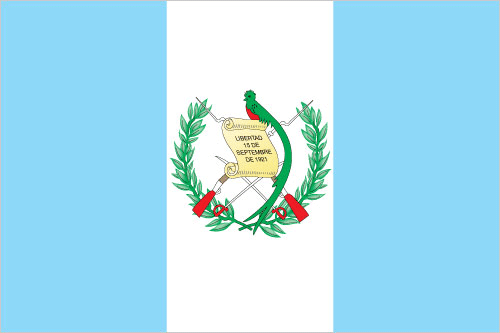
The Maya civilization flourished in Guatemala and surrounding regions during the first millennium A.D. After almost three centuries as a Spanish colony, Guatemala won its independence in 1821. During the second half of the 20th century, it experienced a variety of military and civilian governments, as well as a 36-year guerrilla war. In 1996, the government signed a peace agreement formally ending the internal conflict, which had left more than 200,000 people dead and had created, by some estimates, about 1 million refugees.
petroleum, nickel, rare woods, fish, chicle, hydropower
arable land: 13.78%
permanent crops: 8.68%
other: 77.55% (2011)
14,647,083 (July 2014 est.)
country comparison to the world: 70
Mestizo (mixed Amerindian-Spanish - in local Spanish called Ladino) and European 59.4%, K'iche 9.1%, Kaqchikel 8.4%, Mam 7.9%, Q'eqchi 6.3%, other Mayan 8.6%, indigenous non-Mayan 0.2%, other 0.1% (2001 census)
Roman Catholic, Protestant, indigenous Mayan beliefs
Spanish (official) 60%, Amerindian languages 40%
note: there are 23 officially recognized Amerindian languages, including Quiche, Cakchiquel, Kekchi, Mam, Garifuna, and Xinca
definition: age 15 and over can read and write
total population: 75.9%
male: 81.2%
female: 71.1% (2011 est.)
Guatemala City
constitutional democratic republic
15 September 1821 (from Spain)
Independence Day, 15 September (1821)